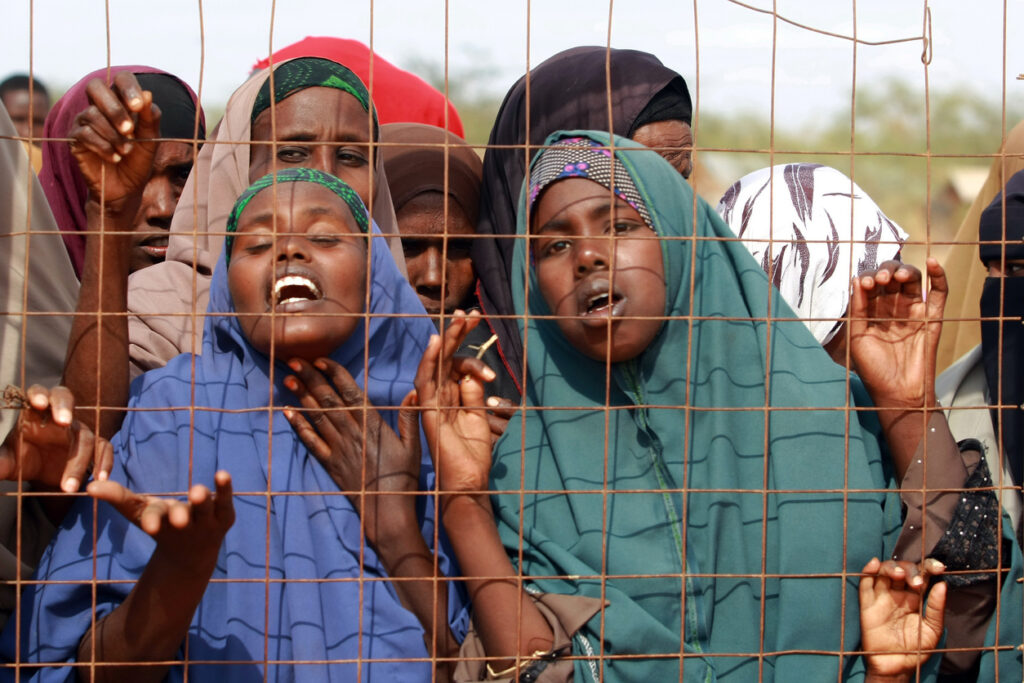Rome/New York, May 31 – Urgent appeals for fresh funds to support life-saving humanitarian aid have increased, compelled by alarming facts that 18 hunger “hotspots” in 22 countries have worsened and have spread.
The Food and Agriculture Organization and World Food Program said in a report that Afghanistan, Nigeria, Somalia, South Sudan and Yemen are at the highest alert level of hunger.
Conditions in Haiti, Burkina Faso and Mali in the Sahel, and the Sudan are now at the highest concern levels due to severe movement restrictions to people and goods because of the war in Sudan.
Hunger hotspots with very high concern exist in the Central African Republic, the Democratic Republic of the Congo, Ethiopia, Kenya, Myanmar, Pakistan and Syria.
The report said Lebanon is added to the list of hotspots, joining Malawi and El Salvador, Guatemala, Honduras and Nicaragua in Central America.
“All hotspots at the highest level have communities facing or projected to face starvation, or are at risk of sliding towards catastrophic conditions, given they have already emergency levels of food insecurity and are facing severe aggravating factors. These hotspots require the most urgent attention,” the report said.
“All these hotspots have a large number of people facing critical acute food insecurity, coupled with worsening drivers that are expected to further intensify life‑threatening conditions in the coming months.”
The report titled “Hunger Hotspots – FAO-WFP early warnings on acute food insecurity” called for urgent humanitarian action to save lives, prevent starvation and death in hotspots where acute hunger is at a high risk of worsening from June to November 2023. Read report
“Business-as-usual pathways are no longer an option in today’s risk landscape if we want to achieve global food security for all, ensuring that no one is left behind.” said Qu Dongyu, FAO Director-General.
“We need to provide immediate time-sensitive agricultural interventions to pull people from the brink of hunger, help them rebuild their lives, and provide long-term solutions to address the root causes of food insecurity. Investing in disaster risk reduction in the agriculture sector can unlock significant resilience dividends and must be scaled up,” he added.
“Not only are more people in more places around the world going hungry, but the severity of the hunger they face is worse than ever,” said Cindy McCain, WFP’s Executive Director.
“This report makes it clear: we must act now to save lives, help people adapt to a changing climate, and ultimately prevent famine. If we don’t, the results will be catastrophic,” McCain warned.
Yemen – The report said the country is one of the most food insecure countries in the world under the impact of years of conflict and economic decline. It said about 3.2 million people experienced high levels of acute food insecurity in government-controlled areas, representing a 23 per cent reduction from the period between October and December 2022. From June to December 2023, the report estimated that the number of people likely to experience high levels of acute food insecurity could increase to 3.9 million, out of which 2.8 million people are projected to reach crisis levels of hunger.
Sudan – WFP reported on May 30th that it was able to reach desperate families trapped in Khartoum, capital of Sudan, for the first time since the armed conflict broke out on April 15.
WFP’s Country Director in Sudan, Eddie Rowe, said the agency distributed food assistance to 15,000 people in both Sudanese Armed Forces (SAF) and Rapid Support Forces (RSF) controlled areas of Omdurman. As reported by the U.N., Rowe said other recent food distributions took place in Wadi Halfa in Northern State to reach 8,000 people fleeing Khartoum and on their way to Egypt, as well as to 4,000 newly displaced people in Port Sudan.
WFP said it has been able to reach 725,000 people across 13 states in the country since it resumed its operations on May 3. WFP said some 16 million Sudanese have had difficulty to afford a meal a daybefore war broke out. It said food insecure population is expected to increase by about 2.5 million in coming months in addition to those already in the difficult situation. The agency said it plans to reach 5.9 million people across Sudan over the next six months and needs $730 million in humanitarian aid, telecommunications and logistics services.
Syria – The U.N. has appealed for $5.4 million to assist 15.3 million, or close to 70 per cent of Syria’s population, who are experiencing some degree of “humanitarian stress.”
Ghada Mulawi, the U.N. humanitarian office’s deputy operations director, told the U.N. Security Council on May 30th that the Syrian people “are more and more reliant on humanitarian assistance as basic services and critical infrastructure are on the brink of collapse. Syrian people need the support of the international community now more than at any time in the past 12 years.”
United Nations correspondent journalists – United Nations correspondent journalists – United Nations correspondent journalists – United Nations journalism articles – United Nations journalism articles – United Nations journalism articles – United Nations News – United Nations News – United Nations News

